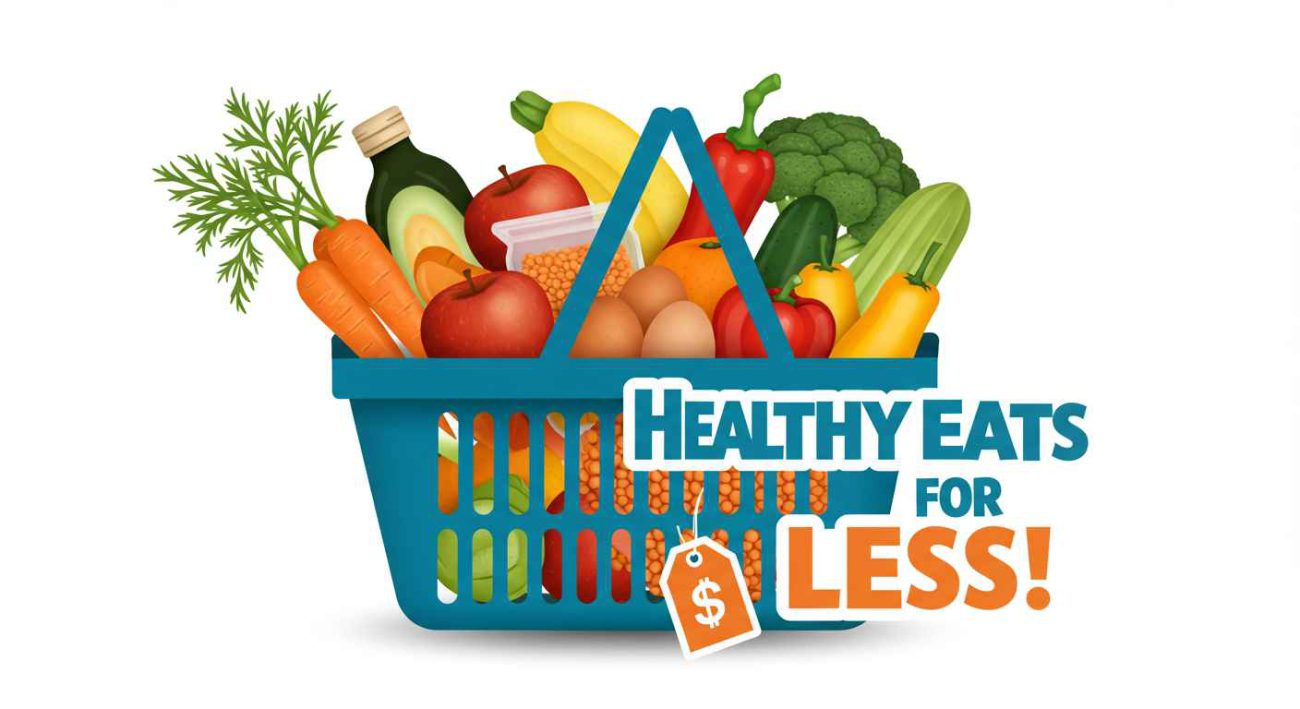You’re standing in the grocery store aisle, eyeing a vibrant bag of fresh kale, only to glance at the price tag and feel your wallet wince. Sound familiar? The idea of eating healthy often comes with a mental image of pricey organic produce and exotic superfoods, leaving many of us wondering if it’s even possible to nourish our bodies without breaking the bank. The good news? It absolutely is. This article is your guide to making healthy eating affordable, practical, and even exciting—without sacrificing flavor or nutrition. Let’s dive into how you can fill your plate with wholesome foods while keeping your budget in check. Ready to transform the way you shop, cook, and eat?
Plan Like a Pro
Ever walked into a grocery store without a plan, only to leave with a cart full of snacks and regret? Meal planning is your secret weapon for budget-friendly healthy eating. By mapping out your meals for the week, you can shop with purpose, reduce waste, and avoid those last-minute takeout orders. Start by checking your pantry for staples like rice, beans, or canned tomatoes, then build meals around what you already have. Websites like Budget Bytes offer free meal plans with cost breakdowns, showing you how to create balanced dishes for less. Try planning five dinners and using leftovers for lunches—it’s like giving your future self a high-five.
Planning also helps you prioritize nutrient-dense foods. Think versatile ingredients like oats for breakfast, lentils for soups, or eggs for quick meals. A simple trick? Write a grocery list based on your plan and stick to it. This small habit can save you from impulse buys and keep your budget—and health—on track.
Shop Smart, Save Big
The grocery store can feel like a maze, but a few savvy strategies can make it your playground. First, embrace store brands—they’re often just as nutritious as name brands but cost significantly less. A 2023 study from the USDA found that generic brands can save shoppers up to 40% without compromising quality. Next, look for sales and seasonal produce. Apples and root vegetables shine in fall, while summer brings affordable berries and zucchini. Farmers’ markets or discount grocers like Aldi can also stretch your dollar further.
Another game-changer? Buying in bulk for non-perishables like grains, nuts, or dried beans. Just be sure to store them properly to avoid spoilage. And don’t shy away from frozen fruits and vegetables—they’re often flash-frozen at peak ripeness, locking in nutrients at a fraction of the cost of fresh. How often do you check the freezer aisle for deals? You might be surprised at the savings waiting there.
Embrace Plant-Based Power
Meat can be a budget buster, but cutting back doesn’t mean sacrificing flavor or protein. Plant-based staples like lentils, chickpeas, and black beans are nutritional powerhouses that cost pennies per serving. For example, a pound of dried lentils—enough for multiple meals—often costs less than $2 and delivers fiber, protein, and iron. Try swapping meat for beans in tacos, soups, or stir-fries. Websites like Minimalist Baker have recipes that make plant-based meals feel indulgent, not restrictive.
Not ready to go fully vegetarian? Start with “Meatless Mondays” to ease into it. You’ll not only save money but also reduce your environmental footprint—a win for your wallet and the planet. What’s one plant-based dish you’ve been curious to try? It might just become your new go-to.
Cook Once, Eat Twice
Time is money, and batch cooking saves both. By preparing large portions of versatile dishes like chili, stir-fry, or casseroles, you can enjoy multiple meals with minimal effort. For instance, a big pot of vegetable soup can be lunch for days, and it only gets tastier as the flavors meld. Use affordable ingredients like potatoes, carrots, or canned tomatoes to keep costs low. A 2024 report from Feeding America noted that batch cooking can cut food waste by up to 30%, meaning more meals for your money.
Pro tip: Invest in reusable containers to store leftovers safely. You can also freeze portions for those days when cooking feels like climbing a mountain. Imagine coming home to a ready-made, healthy meal—how much stress would that save?
Get Creative with Leftovers
Leftovers aren’t just for reheating—they’re a canvas for creativity. That half-bag of spinach? Toss it into a smoothie or scramble. Yesterday’s roasted veggies? Blend them into a soup or pile them into a wrap. Repurposing ingredients keeps your meals exciting and your budget intact. Apps like SuperCook let you input what’s in your fridge and suggest recipes, turning odds and ends into delicious dishes.
This approach also sparks mindfulness about food waste. The EPA estimates that the average American household throws out $1,600 worth of food annually. By getting creative, you’re not just eating healthier—you’re making every dollar count. What’s one leftover dish you could reinvent this week?
Master the Art of Seasoning
Healthy eating doesn’t have to be bland, and you don’t need fancy ingredients to make food sing. A well-stocked spice rack—think cumin, paprika, garlic powder, or chili flakes—can transform simple ingredients into crave-worthy meals. Spices are a one-time investment that lasts for months, making them a budget-friendly way to elevate dishes. For example, a $1 jar of cumin can turn plain rice and beans into a fiesta of flavors.
Experiment with herbs like basil or thyme if you have a sunny windowsill for a small herb garden. Even a sprinkle of dried oregano can make a basic tomato sauce feel gourmet. What’s your favorite way to spice up a meal? A little creativity here goes a long way.
Prioritize Nutrient Density
Not all cheap foods are created equal. Focus on nutrient-dense options that give you the most bang for your buck. Eggs, for instance, are a protein-packed staple often costing less than $3 a dozen. Sweet potatoes, rich in fiber and vitamins, are another budget hero—roast them, mash them, or stuff them for a filling meal. Oats, canned fish, and leafy greens like cabbage also deliver big on nutrition without the hefty price tag.
The trick is to balance these with smaller amounts of pricier items, like fresh berries, to keep meals varied. A 2025 article from Healthline suggests mixing high-cost and low-cost ingredients to create balanced plates. Ever thought about how a single ingredient can anchor a meal? Pick one nutrient-dense food to build around this week.
Make It a Lifestyle, Not a Chore
Healthy eating on a budget isn’t about perfection—it’s about consistency. Start small, maybe with one new habit like planning a week’s worth of dinners or trying a plant-based recipe. Over time, these choices become second nature, like brushing your teeth. The beauty is in the flexibility: you don’t need to shop at high-end stores or buy organic everything to eat well. It’s about making informed choices that fit your life.
Reflect for a moment—what’s one small change you could make today? Maybe it’s swapping soda for water or cooking a double batch of soup. Each step builds a foundation for health that feels empowering, not overwhelming. The result? A lifestyle that nourishes your body, saves money, and sparks joy in the kitchen.
Healthy eating on a budget is more than possible—it’s an adventure in creativity and resourcefulness. From planning meals to embracing leftovers, these strategies empower you to eat well without stress. Everyone’s journey looks different, so experiment with what works for you. Maybe start with a simple lentil soup or a vibrant veggie stir-fry. The key is to take that first step, knowing each choice brings you closer to a healthier, happier you. So, what’s on your plate this week? Dive in and discover how delicious and affordable healthy eating can be!

